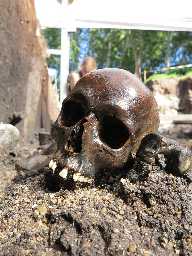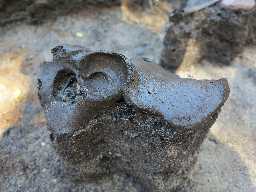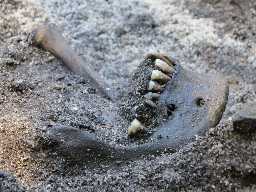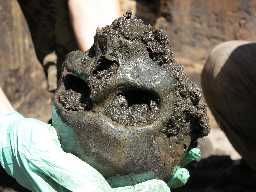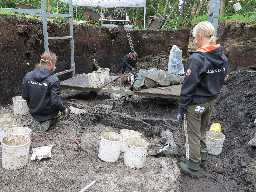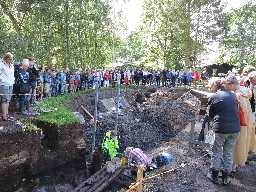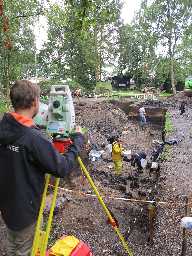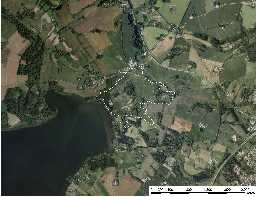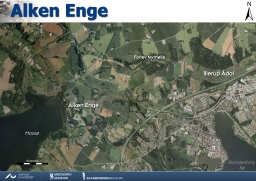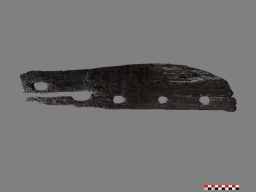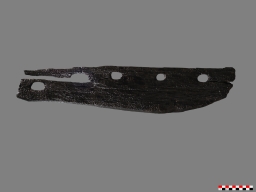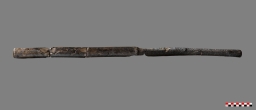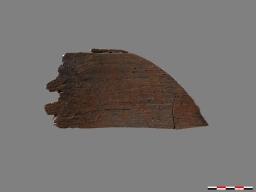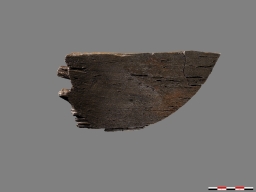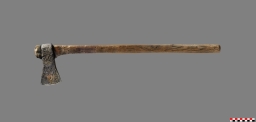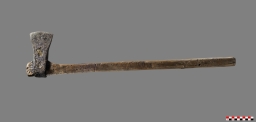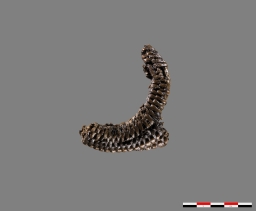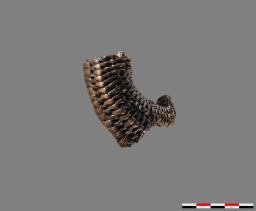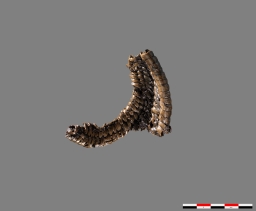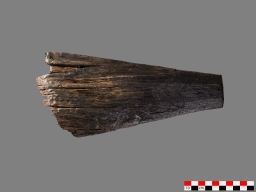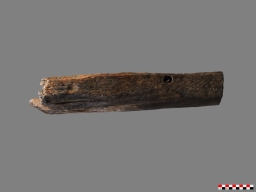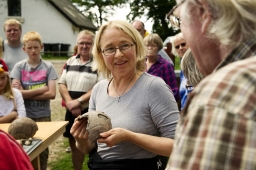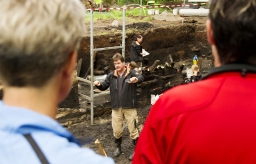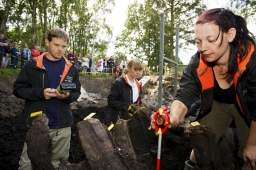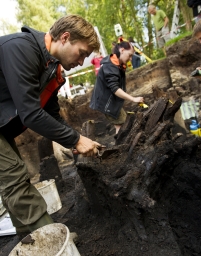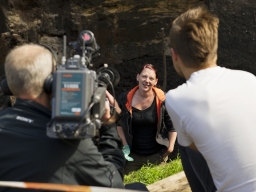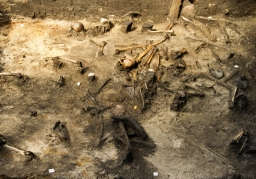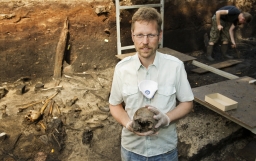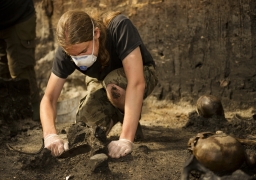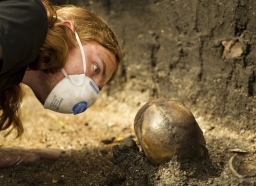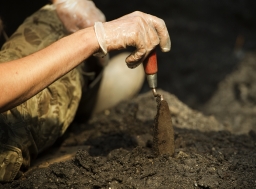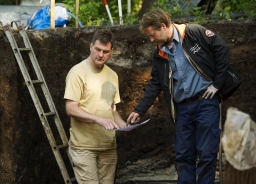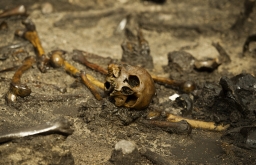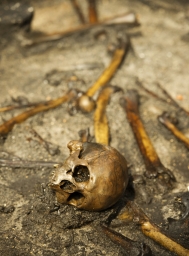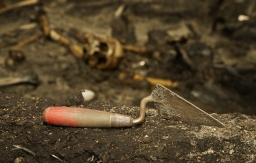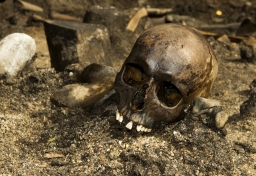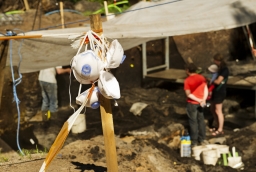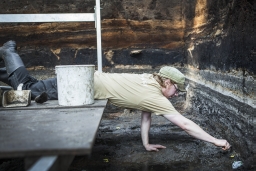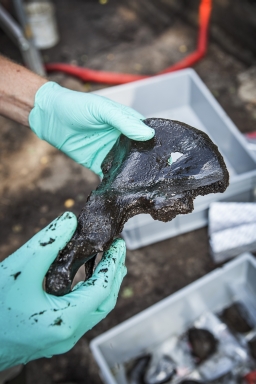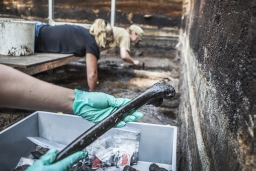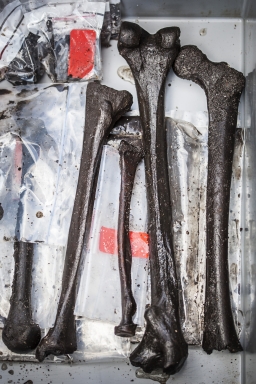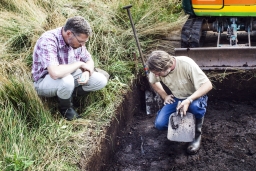Abstract
New archaeological excavations at Alken Enge, Jutland, in Denmark have revealed a comprehensive assemblage of disarticulated human remains within a 75-ha. wetland area. A minimum of 82 individuals have been uncovered. Based on the distribution, the total population is estimated to be greater than 380 individuals, exclusively male and predominantly adult. The chronological radiocarbon evidence of the human bones indicates that they belong to a single, large event in the early first century AD.
The bones show a high frequency of unhealed trauma from sharp-edged weapons, which, together with finds of military equipment, suggests that the find is of martial character. Taphonomic traces indicate that the bones were exposed to animal gnawing for a period of between six months and one year before being deposited in the lake. Furthermore, the find situations including collections of bones, ossa coxae threaded onto a stick, and cuts and scraping marks provide evidence of the systematic collection and treatment of the human corpses after the time of exposure.
The finds are interpreted as the remains of an organised and possibly ritually embedded clearing of a battlefield, including the physical manipulation of the partly skeletonised bones of the deceased fighters and subsequent deposition in the lake. The date places the finds in the context of the Germanic region at the peak of the Roman expansion northward and provides both the earliest direct archaeological evidence of large-scale conflict among the Germanic populations and and a demonstration of hitherto unrecognized post-battle practices.
Publications
Hertz, E. & Holst, M. K. (2015). De kasserede døde i mosen. Krig og vold i fortiden. Fund og Fortid 2015 (2/3) – 25 års jubilæumsudgave, 44-49.
Jensen, P. (2018). Evaluating Authenticity: Authenticity of 3D Models in Archaeological Field Documentation. In: Authenticity and Cultural Heritage in the Age of 3D Digital Reproductions, edited by P. Di Giuseppantonio Di Franco, F. Galeazzi, and V. Vassallo. McDonald Institute Seminar Series. Cambridge: Cambridge University Press.
Jensen, P. (submitted) Semantically enhanced 3D: A web-based platform for spatial integration of excavation documentation at Alken Enge, Denmark. In: Web-based Infrastructure as a Collaborative Framework across Archaeological Fieldwork, Lab Work, and Analysis, edited by F. Galeazzi, & H. Richards-Risetto. Journal of Field Archaeology.
Kristiansen, S. M., Søe, N. E., Kroon, A., Andersen, H. L., Christiansen, A. V., Odgaard, B. (2018). Was the 4th largest Danish Lake (Mossø) once much larger? Nordic Geologic Winter meeting 2018, Copenhagen. Abstract.
Lynnerup, N., Mollerup, L., MK, DP, et al. (XXXX). The population of the Alken Enge army. Demography, provenance, diet and genetic history.
Odgaard, B. V., Søe, N. E., Nielsen, A. B., Olsen, J., Kristiansen S. M. (2016). Pollen, Landscape Reconstruction Algorithm and lake sediment geochemistry combined to refine interpretations of nature and chronology of Roman Iron Age terrestrial ecosystem changes. XIV International Palynological Congress and X International Organisation of Palaeobotany Conference. Bahia, Brazil, October 23-28. Abstract.
Pedersen, J. B., Auken, E., Christensen, A. V. Kristiansen, S. M. (2015). Mapping soil heterogeneity using spatial constrained inversion of electromagnetic induction data, 21th European Meeting of Environmental and Engineering Geophysic Near Surface. Turin, 6-10th September, Italy. Abstract.
Tjelldén, A. K. E., Kristiansen, S. M., Birkedal, H. & Jans, M. (submitted). The pattern of human bone dissolution – a histological study of Iron Age warriors from a Danish wetland site. Journal of Osteoarchaeology.
Tjelldén, A. K. E., Mathiesen, H., Birkedal., H & Kristiansen, S. M. (2015). Best practice methods for evaluating and monitoring archaeological human bone diagenesis – a Danish example. Preservation of Archaeological remains in situ. PARIS 2015. Kreutzlingen, Schwitzerland. 12-18th April. Abstract.
Tjelldén, A. K. E., Lomholt, S., & Birkedal, H. (submitted). Advantages and limitations of HR-pQCT scans in documenting and describing archaeological human bone diagenesis. Journal of Archaeometry.
Søe, N. E., Odgaard, B. V., Kroon, A., Kristiansen, S. M. (2014). Evolution of a spit system in Lake Mossoe, Denmark. 19th International Sedimentological Congress, Geneva, Switzerland. Abstract.
Søe, N. E., Odgaard, B. V., Kristiansen, S. M., Olsen, J. (2014). A potential record of Late Holocene natural environmental changes in a cultural landscape. Geophysical Research Abstracts vol. 16, EGU2014-12804. Abstract.
Søe, N. E., Odgaard, B. V., Lykke-Andersen, H., Kroon, A. & Kristiansen S. M. (submitted). Bathymetric control on Holocene spit migration in a lacustrine environment. The Holocene.
Data access
The archaeological, geological and anthropological findings at the Alken Enge excavations were recorded directly to an online database. The repository includes descriptive as well as 2D and 3D spatial data and analysis reports. Subsequent iterations of data model and visualization capabilities are continuously published as part of the Archaeo Framework. The Alken Enge Database is made available at www.alkenenge.dk under the Open Database License. Any rights in individual contents of the database are licensed under the Creative Commons Attribution-NonCommercial-ShareAlike 4.0 (CC BY-NC-SA 4.0).
Photos and illustrations


